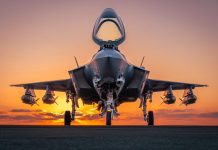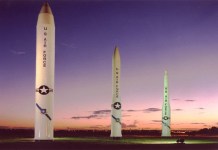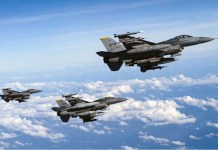While Russian President Vladimir Putin continues monitoring the progress of their most advanced Sukhoi-57, the United States, following the super-success of its fifth-generation fighter – F-35s and their exclusive F-22 Raptor, have no intentions of resting on the perch.
Last month, the Pentagon sent shock waves across the world when the US Air Force announced that it had successfully flown a full-scale flight demonstrator, a program which had been kept under the wraps of the nation’s secretive Next-Generation Air Dominance (NGAD) program.
And now, the US Air Force could be on the course of developing a new stealth fighter, which would be an edge above the stealthy duo of Lockheed’s F-35 Lightning and F-22 Raptors, with the NGAD program far ahead of schedule instead of being in the early phase technology development stage.
With the funding for the program beginning just two years ago, the advanced stage of development comes as a surprise to many. While the US Department of Defence had expressed an interest in building a new “X-Plane” prototype back in 2014, it is not clear whether this was the foundation of the NGAD demonstrator.
WATCH: Video Surfaces From China Revealing DF-17 Hypersonic Missiles On Xian H-6 Strategic Bombers
“It is notable that the aircraft was described as a ‘full-scale flight demonstrator,’ not a ‘prototype.’ The former phrase is used to describe an aircraft that is showing off some form of technology and is different from a ‘prototype,’ which indicated a more production-representative system.” as mentioned in the Congressional Research Service report.
While the head of Air Force acquisition, Will Roper has kept his silence over further information regarding the new fighter, it is certain that the US hopes the program ends up supplying them with a means to possess aerial dominance.
Whether it will be achieved through a single aircraft or a number of complementary systems including manned, unmanned, optionally manned, cyber, or electronic forms, it is still not clear.
Why Erdogan’s Adventurism & Meddling In Global Conflicts Puts Turkey In A Catch-22 Situation?
In what was signalled back in 2015 by then-defence Undersecretary for Acquisition, Technology and Logistics, Frank Kendall, the program was aimed to “develop the technologies and address the risks associated with the air dominance platforms that will follow the F-35, as well as other advanced aeronautical challenges”.
“The intent is to develop prototypes for the next generation of air-dominance platforms — X-plane programs, if you will.” said Kendall.
According to the US Air Force, the next-generation fighter developed under the NGAD program will have five major technologies examined, to achieve the target of enhancing the fighter’s survivability, lethality, and persistence.
While there still remains a cloud of uncertainty over what the technologies are, one of the acknowledged NGAD-related technology is propulsion.
According to Dan McCormick, General Manager for adaptive-Cycle Engine Programs at General Electric,
“What we are seeing today, and this is especially true in all of the discussions around sixth-generation types of airplanes, the propulsion system capability is in fact driving a lot of the thinking about the size of the airframe, what the inlets and exhausts are going to look like, how much fuel capacity the aircraft has to have to meet the range requirements,”
The propulsion system very much needs to be integrated into the design process of these next-generation airplanes.”
While the Air Force has been continuously investing its resources in variable cycle engines for future fighters other major technologies range from new forms of stealth and advanced weapons including Direct Energy Weapons (DEWS) along with thermal management.
As per the Congressional Research Service report on the NGAD Program,
“The current engine on the F-35 and its variants expected to be on the B-21 produce a tremendous amount of electrical power that can enable new weapons. That could require advanced techniques to manage generated heat so that it does not become part of the aircraft signatures and make the plane easier to detect.”
WATCH: Video Surfaces From China Revealing DF-17 Hypersonic Missiles On Xian H-6 Strategic Bombers
Moreover, if the US is able to harness the technology within time, the new fighter could be equipped with optical stealth or another ability to make the aircraft invisible to the human eye.
According to Kyle Mizokami, writing for Popular Mechanics – “One wildcard could be optical stealth, or the ability to essentially make NGAD aircraft invisible to the human eye. The U.S. military is known to have researched this technology, but it’s not clear what progress, if any, it made,”
Could the technology have progressed in secret to the point it could be carried by a fighter jet? Most of America’s stealth fighters plan to open fire before the enemy is in visual range, but if the air battle devolves into a swirling dogfight, optical stealth would be very useful indeed.”
According to reports, the budget under NGAD is estimated to be $9 billion from 2019 to 2025, with the Fiscal Year 2021 (FY21) budget set at $1 billion.




